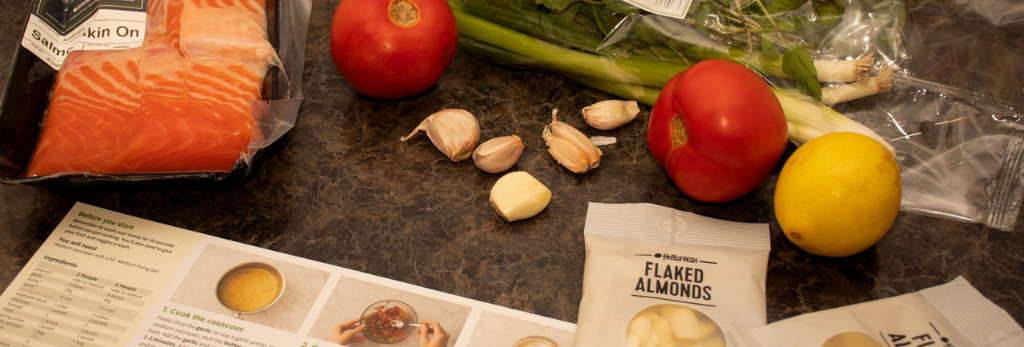What are the 5 Rules of Innovation?
In today’s competitive marketplace, true innovation demands more than addressing obvious consumer needs, which is why we’ve identified the 5 rules of innovation. It requires uncovering hidden tensions, challenging norms, and simplifying complexities. Brands that excel translate sharp insights into actionable ideas. From there, they present their value propositions clearly and memorably. Here are five principles for looking beyond the obvious, illustrated by brands that mastered them.
1. Identify Hidden Tensions
The most impactful innovations resolve problems that consumers don’t openly express but deeply feel. These hidden tensions often arise from unmet needs or compromises.
The Spice Tailor recognised a common frustration: many home cooks aspire to create authentic Indian dishes but are put off by complex recipes and the wastefulness of buying large quantities of spices they’d rarely use. By introducing premium meal kits, The Spice Tailor provided pre-portioned, authentic ingredients that made creating these dishes easy and satisfying. These kits gave consumers the confidence to recreate rich, regional flavours without the onerous time and cost implications, reframing convenience as empowerment.
“Brands that identify these subtle tensions create products that feel like tailored solutions rather than generic offerings, ensuring deeper resonance with their audiences.“
What to know more about identifying hidden tensions? Click here.
2. Reframe the Familiar
True innovation doesn’t always require inventing something new, it can involve seeing the familiar through a completely different lens.
Dollar Shave Club transformed the razor market, a category that had stagnated under the dominance of major brands like Gillette. Instead of competing on ever-increasing blade counts or luxury features, they redefined razors as simple, affordable essentials. By cutting out traditional retail channels, they reduced supply chain costs, allowing them to offer lower prices without sacrificing quality. This disruptive approach resonated with Millennials and Gen Z consumers, who value affordability and convenience, particularly during periods of economic uncertainty.
“Innovation is often less about the product and more about the distribution model, positioning, or messaging. Reframing the familiar allows brands to bring fresh value to even commoditised categories.“
What to know more about reframing the familiar? Click here.

3. Balance Opposing Desires
Consumers are increasingly demanding solutions that combine what were once seen as mutually exclusive benefits, indulgence without guilt, convenience with quality, or sustainability at an affordable price.
Halo Top Ice Cream tapped into this dynamic perfectly. Traditional ice cream brands thrived on indulgence but paid little attention to health-conscious consumers. Diet-focused alternatives, meanwhile, sacrificed taste and texture to achieve lower calorie count. Halo Top struck the balance by creating a low-calorie, high-protein ice cream that still tasted indulgent. This innovation not only satisfied a growing demand for healthier treats but also redefined what consumers expected from the frozen dessert aisle.
“By understanding the dualities that shape consumer decisions, brands can create breakthrough products that don’t force consumers to compromise.”
What to know more about balancing opposing desires? Click here.
4. Simplify the Complex
In a world overwhelmed with choices, simplicity can be revolutionary. When brands reduce friction in decision-making or execution, they win consumer loyalty.
HelloFresh understood that many people want the benefits of home cooking but are deterred by the planning and shopping it requires. Their innovation was to simplify the entire process by delivering pre-portioned ingredients alongside easy-to-follow recipes. By turning a time-intensive chore into an enjoyable experience, they made home cooking accessible to busy households. Their approach aligned with broader trends of convenience and experiential dining, allowing them to stand out in a crowded meal delivery market.
“Simplicity isn’t just about convenience, it’s about creating a frictionless experience that makes life easier for consumers. This approach resonates particularly strongly with younger, time-starved audiences.”
Find out how to simplify the complex. Click here.

5. Create Emotional Resonance
Beyond functionality, successful brands build emotional connections that elevate their offerings. Products that tap into identity, rebellion, or empowerment become more than just objects, they become symbols.
Liquid Death achieved this by transforming bottled water, one of the most commoditised products, into a cultural statement. By rejecting the wellness-focused imagery of competitors and embracing heavy-metal aesthetics and irreverent humour, they connected with younger consumers eager to express individuality. Their tagline, “Murder Your Thirst,” turned hydration into a lifestyle choice, making Liquid Death synonymous with rebellion and counterculture.
“Emotional resonance creates stickiness. Brands that connect with their consumers’ identities or values foster deeper loyalty and advocacy, ensuring long-term success.”
Where Innovation Wins
Innovation isn’t just about creating something new, it’s about understanding your audience, resolving hidden tensions, and delivering value with clarity and impact. By addressing compromises, reframing the ordinary, balancing opposing desires, simplifying complexities, and creating emotional connections, brands can create meaningful, memorable experiences that go beyond the obvious.
For your next big idea, don’t just ask, “What can we make?” Ask, “What tensions can we resolve? How can we reframe the ordinary? And how will it resonate?” The brands that succeed know the answers to these questions, and act on them with purpose.
If you want to look beyond the obvious, schedule a consultation today.

Ready to innovate beyond the obvious?
We’re ready to unlock your innovation’s success, and won’t settle until our work does just that.
Don’t just take our word for it; check out our Case Studies. Discover today how we have helped leading brands look beyond the obvious to supercharge the success of innovations across industries.
Follow us on LinkedIn to make sure you never miss an announcement.
Let’s talk. Click here to innovate with confidence.
(Independent research conducted by Catalyx)







